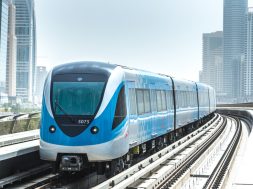RUPEE FALL HITS CONSTRUCTION SECTOR [August 2012]
“With the unsteadiness of the rupee leaving an impact globally, the construction sector is still optimistic and moving ahead,” analyse Subhajit Roy and Relin Hedly
Indian rupee is Asia's worst-performing currency against the U.S. dollar over the past one year or so. Over the years, the central government's heavy spending has mounted the fiscal deficit. Today, the country's highest ever current-account deficit together with global economic slowdown has hit the economy severely.
Though, the Indian economy still is expanding faster than many economies of developed nations, the never-ending downfall in rupee value is merely a small exposure to the country’s deteriorating financial health.
Fluctuating Market during Economic DownfallThe entire world is witnessing convulsions thanks to the economic crisis. Major financial institutions suffered severe loss since the beginning of 2008. With inflation at its peak, the emerging economies are also experiencing a reduction in their growth rates. As a result, the world economy appears to be slowing down rapidly.
At present, the economic downfall in the Indian economy is not showing any positive signs. Though not completely optimistic the economy is still moving ahead at a slower pace. While there was a significant reduction in the GDP growth rate, a moderate downturn for India is being predicted.
These major financial debacles have direct and severe impact on Indian construction sector. According to Makrand Khanolkar, Consultant-Business Planning, Maitreya Realtors, “As the world economy is seeing a downturn, the Indian economy is also grappling with its own challenges, one of the major being the depreciation of Indian Rupee against all major currencies like US Dollar and Pound. This has negatively hit the various sectors of the economy like petroleum, automobiles, iron & steel.”
Commenting on the depreciation in rupee value and its impact over construction sector, a spokesperson for DB Realty said, “Capital has dried up for the sector due to varied reasons including stringent norms for lending by RBI and lower risk appetite of the banks/ sectoral cap limits. The FDI/ foreign PE investment was a saviour since 2007 when sector was opened up. Most of the FDI came in at 38 – 42 rupee exchange rate to dollar and exit from investments is aimed now after 4 – 6 years. While exit seems to be generally painful due to lack of liquidity and other macro
economic conditions, overall depreciation in rupee by 25 – 35 per cent has eroded sizeable part of capital appreciation/ handsome returns earned in rupee terms. This may impact attracting fresh foreign investment as investors may be unhappy receiving poor dollar denominated returns.” Mumbai-based DB Realty is one of the leading real estate developers in India.
Increased Project Development CostsThe rupee in recent times has been hardening against world majors. The construction sector, with specific reference to real estate has neither seen much positive or negative impact due to the depreciating rupee. However, the fall of rupee value in exchange of U.S. dollar has had its impact over import market. Today, India being one of the import dependant economies, almost every industry is affected due to rise in input costs; construction sector is not an exception. The depreciation in rupee value has gradually increased the price of construction equipment and building materials and therefore enhanced the project execution cost.
Therefore, decline in rupee is set to impact infrastructure sector projects dependent on international market borrowings and imported equipment in a big way. Increasing costs of inputs like steel and cement are also affecting infrastructure building. Many of the NHDP work are also getting adversely affected and delayed. Fresh investments in infrastructure could also get priced out.
Experts apprehend that over 20 per cent slide in the rupee would raise the cost of infrastructure projects substantially. According to Anand Sundaresan, Managing Director, SCHWING Stetter India, “The rupee has depreciated by more than 25 per cent between April 2011 and today. This has caused serious damage for the construction industry, in particular, construction contractors and construction equipment manufacturers. Construction contractors are heavily dependent on imports for some of their specialised equipment like high-capacity cranes, automised bar-bending equipment, and tunnel boring equipment etc. With many metro rail projects under construction, the cost of these equipment have gone up by more than 25 per cent purely because of rupee devaluation”. Germany-based SCHWING Stetter is one of the world's leading manufacturers of concrete construction equipment.
Decline in FDI for real estateAccording to some recent reports, there has been a 92 per cent decline in FDI for real estate sector April 2009 to December 2011. “FDI in real estate sector needs to be improved as fresh investments are required to recuperate from the slowdown”, Mr. Khanolkar suggests.
Survival at stake for CE manufacturersThe business of construction equipment (CE) manufacturers in India is also badly affected by devaluation of Indian currency. Most of the CE manufacturers are fairly new in the country and there are many components like hydraulic aggregates which get into the manufacture of construction equipment, which are imported from Europe and the US. Even certain specialised steel like fine grain steel used by concrete boom pump manufacturers like SCHWING Stetter, are imported. His company has an import content of almost 30 per cent on its total purchase by way of imports, primarily because these components are not being manufactured in India. Secondly, the company keeps introducing many new products in the market, where the import content is very high.
Mr. Sundaresan reveals, “The 25 per cent depreciation of the Indian rupee straight away increases our material cost by over 8 per cent. In the capital equipment industry, it is impossible to realise this increase from the customer especially when the economy is so bad, where there are no contracts being finalised, making it extremely difficult for the construction sector to survive.”
Almost echoing this voice, MRV Johnson, General Manager & Head (Sales & Marketing) at Voltas Material Handling said, “Depreciation in rupee value has its strongest impact on full machine importers in our industry and partial impact is also being witnessed on the local manufacturers who use imported components substantially. On the other hand, the market is not in a position to accept higher prices and hence, there is a drop in projected market volumes, since last six months.”
Ray of HopeHowever, experts say, “All is not so bad with the construction industry.” Although the sector is struggling with higher input costs, asymmetrical inflation, liquidity crunch; at the same time it brings opportunities for the NRI investors to invest in real-estate business. The comparatively higher value of U.S. dollar gives them the right opportunity for investment. According to Sanjay Raj, CEO, Golden Gate Properties, “Due to the price advantage, the bookings from NRIs are on rise in Bangalore.” Bangalore-based Golden Gate Properties is a one of the leading developers in South India.
Investment from NRI is also being witnessed in the State of Punjab. Chandan Singh, Executive Director, Aeren R Enterprises, comments, “The depreciating rupee may be a concern for the economy, but builders in Punjab are getting an alternative market from the NRI segment. The real estate here which was reeling under pressure due to high interest costs and inflation is active with many new projects being launched.”With Punjab’s prosperous NRIs securing their properties back home in Punjab after US companies started laying off people in many industries, the property market in Punjab has picked up. During this downtime in US market, NRI are attracted more towards buying property and real estate in Punjab rather than investing abroad.
“It is estimated that more than 10,000 NRIs from US will deal in property buying and selling in Punjab alone during the current year, though not many from Eurozone. NRI Punjabis can be heard talking to each other enquiring about rates and location of interest with each other, ”Mr. Singh added.
However, DB Realty spokesperson said, “While it may be a good time for foreign investment to enter India given the rupee exchange rate; poor macro economic situation is not helping either. The sector though does not rely on large imports and may not suffer on that dimension, many have availed cheaper dollar denominated debt when ECB was permitted. With rupee depreciation and costly repatriation a typical example, a 7 per cent dollar loan has resulted in a 16 – 18 per cent rupee loan.”
Cookie Consent
We use cookies to personalize your experience. By continuing to visit this website you agree to our Terms & Conditions, Privacy Policy and Cookie Policy.









